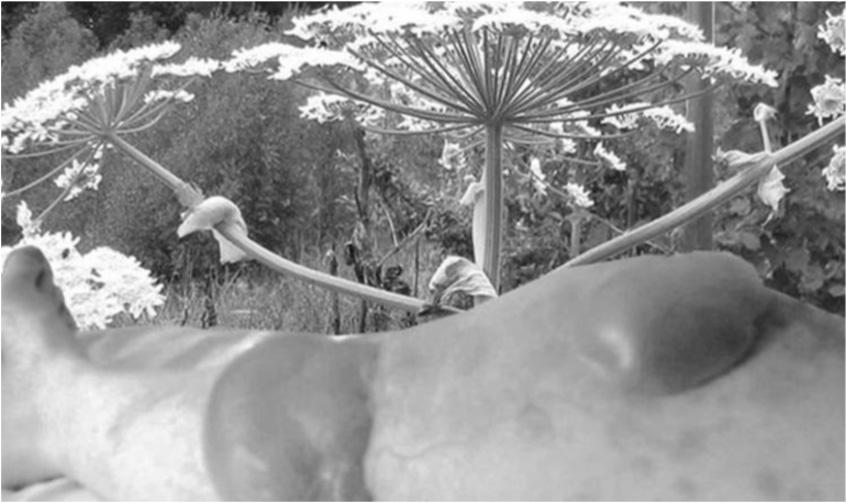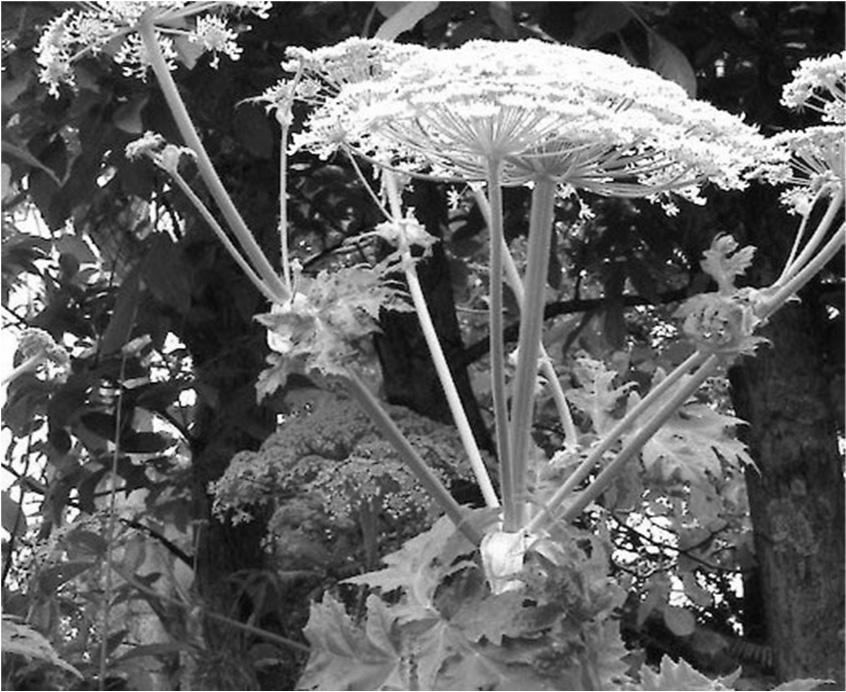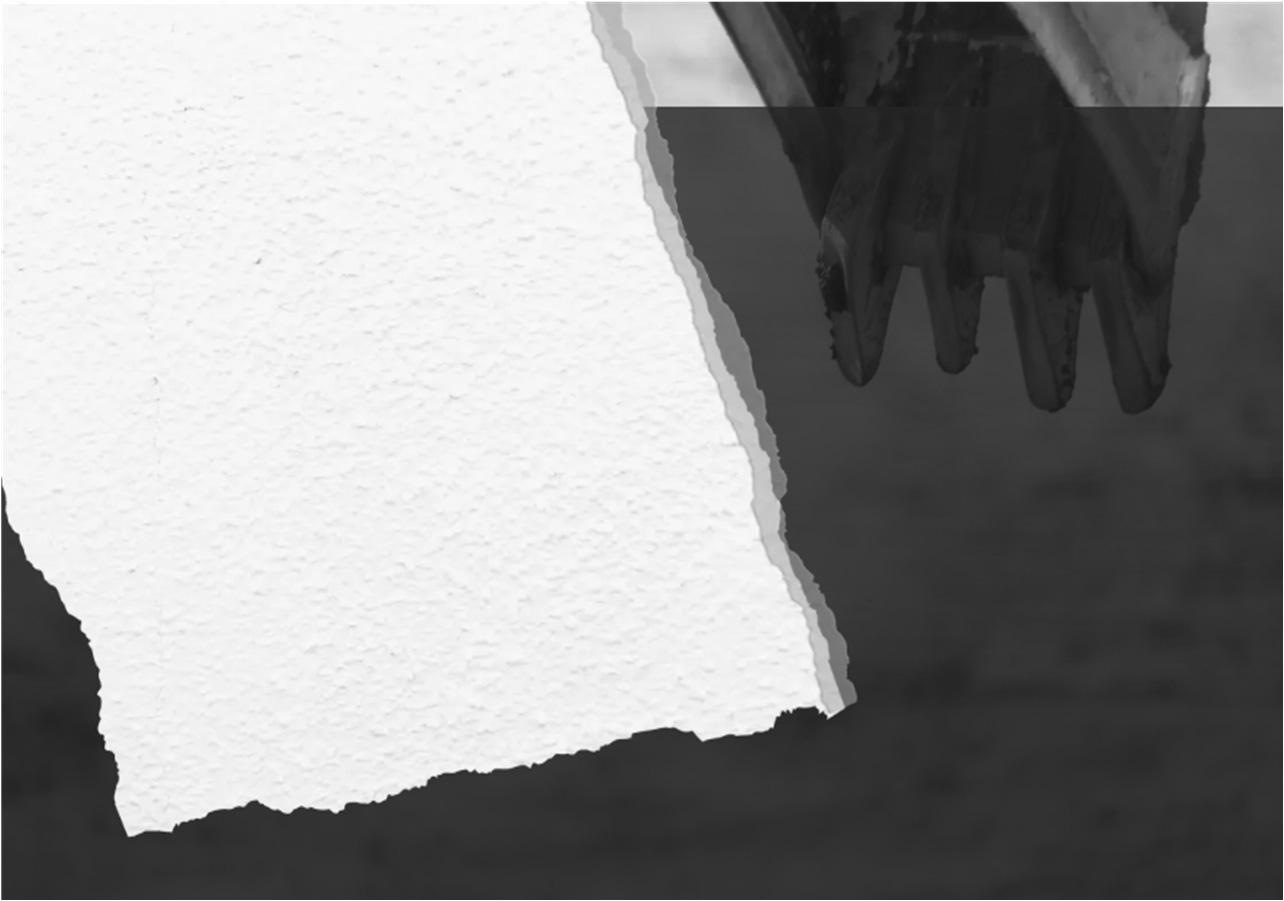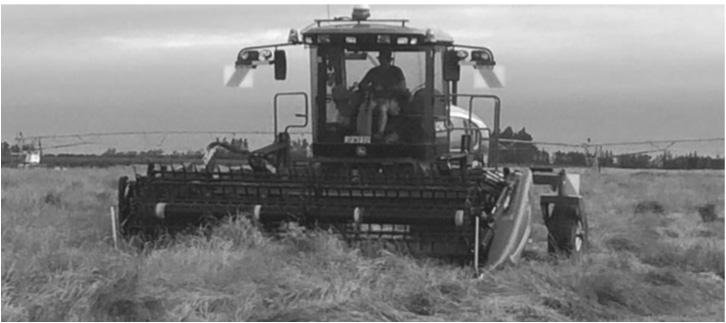
2 minute read
GIANT HOGWEED CAUTION
Recently, local keen gardener, Pamela Dobson suffered from extreme blisters and irritated skin after spending some time in her Coalgate garden. After seeking medical advice and coming away without answers, it was discovered that she had been in contact with Giant Hogweed, a weed poisonous to humans. The plant originated in Asia and was introduced throughout the world as an ornamental plant!

Advertisement
The following information has been provided by Weedbusters, as Pamela wouldn’t like anyone else to go through what she has suffered from for the last month. The plant, also known as wild rhubarb, wild parsnip or cartwheel flower, is a massive, erect, biennial herb (<6m) growing from a forked or branched taproot with large leaves (50-100cm long), made up of three bristled, deeply divided leaflets, forming a rosette at the base. Grooved, hollow stems (5-10cm diameter) are blotched and spotted reddish purple and have sturdy bristles containing a toxic sap. From December to February in its second year, it produces a tall flower stalk with leaves attached and large umbrella-like clusters (20-60cm diameter) of white flowers (1.5cm diameter) that are followed by dry, flattened, oval, light brown fruit (1cm long). One plant produces up to 50,000 viable seeds that spread rapidly along water courses. Forms dense colonies suppressing the growth of native plants and grasses, dies down in winter, leaving infested banks bare of vegetation and liable to erosion or to reinvasion by weed species.
It is poisonous to humanstouching it, or exposure to dust from weed-eating, can irritate skin and cause blisters and swelling. Sap from leaves and stems is highly toxic and can cause 'photodermatitis' or 'photosensitivity' (the skin becomes very sensitive to sunlight and may suffer blistering, pigmentation and long-lasting scars). Contact with the eyes can lead to temporary or permanent blindness. Areas that come into contact with this plant should be washed immediately and protected from direct sunlight, seek medical advice.
It is normally found along wasteland, road ditches, tree land areas, rivers or stream banks as it prefers rich, moist soils but due to the weather over the past few months, it is making a comeback in urban areas.
Seeds may remain dormant in the soil for at least five years, so prevent germination by oversowing with other species. What can I do to get rid of it?
Always wear gloves and eye protection and cover your arms and legs when working near this plant. Contaminated clothing and tools are potentially hazardous also. Wash any skin that comes in contact with the plant immediately.

1. Hand pull whole plants (spring-summer) before they set seed.
2. Cut down (summer): cut the stem below ground level during flowering but before the seed sets.

3. Spray regrowth in February or March if necessary with glyphosate (150ml/15L).
4. Overall spray (spring): glyphosate (150ml/15L). Spray again in February or March if necessary.



If you have any in your garden please advise your neighbours and report it to your local Council.










